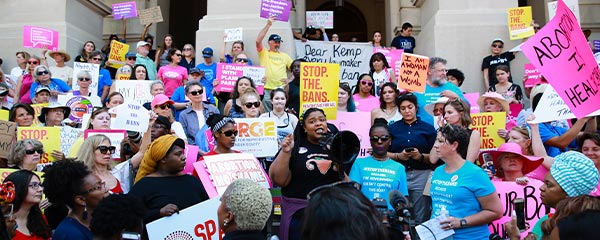PRINCETON, NJ -- Once the 2008 presidential race shifts from the nomination phase to the general election, the differences between John McCain and the Democrats on abortion will likely come into better focus for most voters. Currently, just 13% of Americans say they will vote only for a candidate who shares their views on abortion, while another 49% say it will be just one of many important factors.
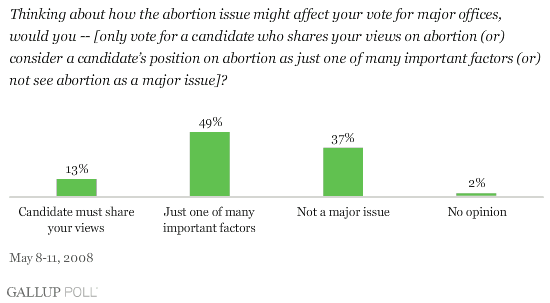
Single-issue abortion voters are in scarce supply, particularly compared with May 2001, when 20% identified themselves as such. But today's 13% is not atypical of results found in the first half of previous presidential election years. In May 2004, only 14% of Americans said a candidate must share their views on abortion; that rose to 17% by October 2004. In March 2000, the figure was only 15%.
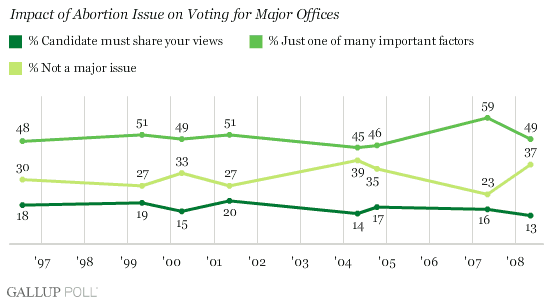
According to Gallup's annual Values and Beliefs survey, updated May 8-11, Americans as a whole are slightly more likely to call themselves "pro-choice" on abortion than "pro-life," 50% to 44%. This is nearly identical to where Americans stood on the issue a year ago, and is similar to the close division seen since 1998. Prior to that (from about 1995 to 1997) Gallup found a stronger pro-choice tilt.
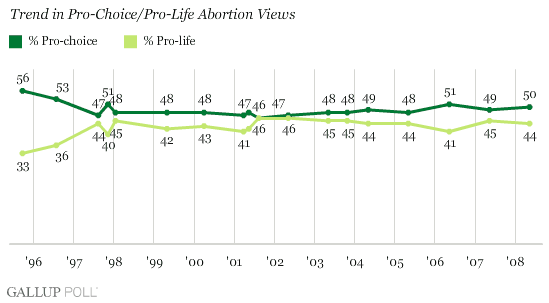
The current poll finds no difference between men and women in the percentages calling themselves pro-choice and pro-life. Americans 55 and older are a bit more "pro-life" than those aged 18 to 34 and 35 to 54. Much greater differences are seen by personal ideology and party affiliation. Three-quarters of liberals and 6 in 10 Democrats call themselves pro-choice, compared with only about 30% of Republicans and conservatives. Independents and moderates fall closer to the Democrats in their views.
As to how the issue will play in regional campaigning, a majority of residents of the East and West are pro-choice, while residents of the South are mostly pro-life and those in the Midwest are evenly split.
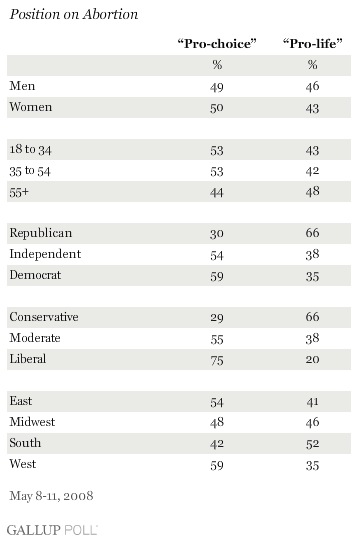
Calculating the Abortion Factor
Traditionally, Gallup has found more pro-life than pro-choice adherents saying a candidate must share their abortion views. The gaps were particularly wide in July 1996 and October 2004. In those two cases, only about 10% of pro-choice Americans, but more than 20% of pro-life persons, said a candidate must share their views.
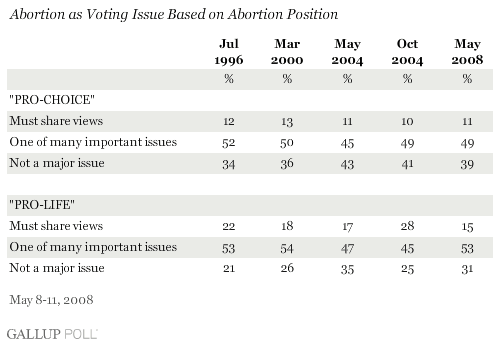
This conforms with historical exit-poll information about the influence of the abortion issue on voters. From 1984 through 2000, the presidential exit polls asked voters to name the most important issues to their vote. As the accompanying table shows, for all five presidential elections in this period, the majority of voters citing abortion said they were supporting the Republican candidate for president. Thus, while the overall percentage of voters mentioning abortion in each case was small, the issue netted the Republican Party's candidate two to three points in the election. (No comparable exit-poll data are available for 2004.)
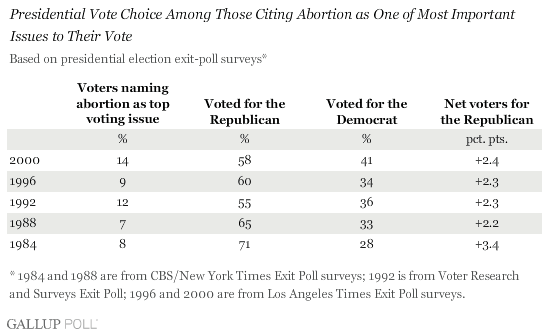
Today, pro-choice and pro-life Americans are fairly similar in their responses to Gallup's voting question. Only when factoring in the percentage saying abortion is one of many important issues they consider do pro-life persons register as more activated to vote on abortion (68% vs. 60%).
Bottom Line
Abortion has been an important element in the Republican campaign playbook going back to Ronald Reagan's 1980 presidential campaign. Exit polls and Gallup data since 1984 indicate the issue has attracted more voters to the "pro-life" candidate (i.e., the Republicans) than it pushed away, and it has possibly helped drive up Republican turnout. However, at this point in the 2008 campaign, the issue appears to be of relatively low salience to Americans, and it is giving pro-life candidates only a slight advantage, at best.
Survey Methods
Results are based on telephone interviews with 1,017 national adults, aged 18 and older, conducted May 8-11, 2008. For results based on the total sample of national adults, one can say with 95% confidence that the maximum margin of sampling error is ±3 percentage points.
Interviews are conducted with respondents on land-line telephones (for respondents with a land-line telephone) and cellular phones (for respondents who are cell-phone only).
In addition to sampling error, question wording and practical difficulties in conducting surveys can introduce error or bias into the findings of public opinion polls.
To provide feedback or suggestions about how to improve Gallup.com, please e-mail feedback@gallup.com.
